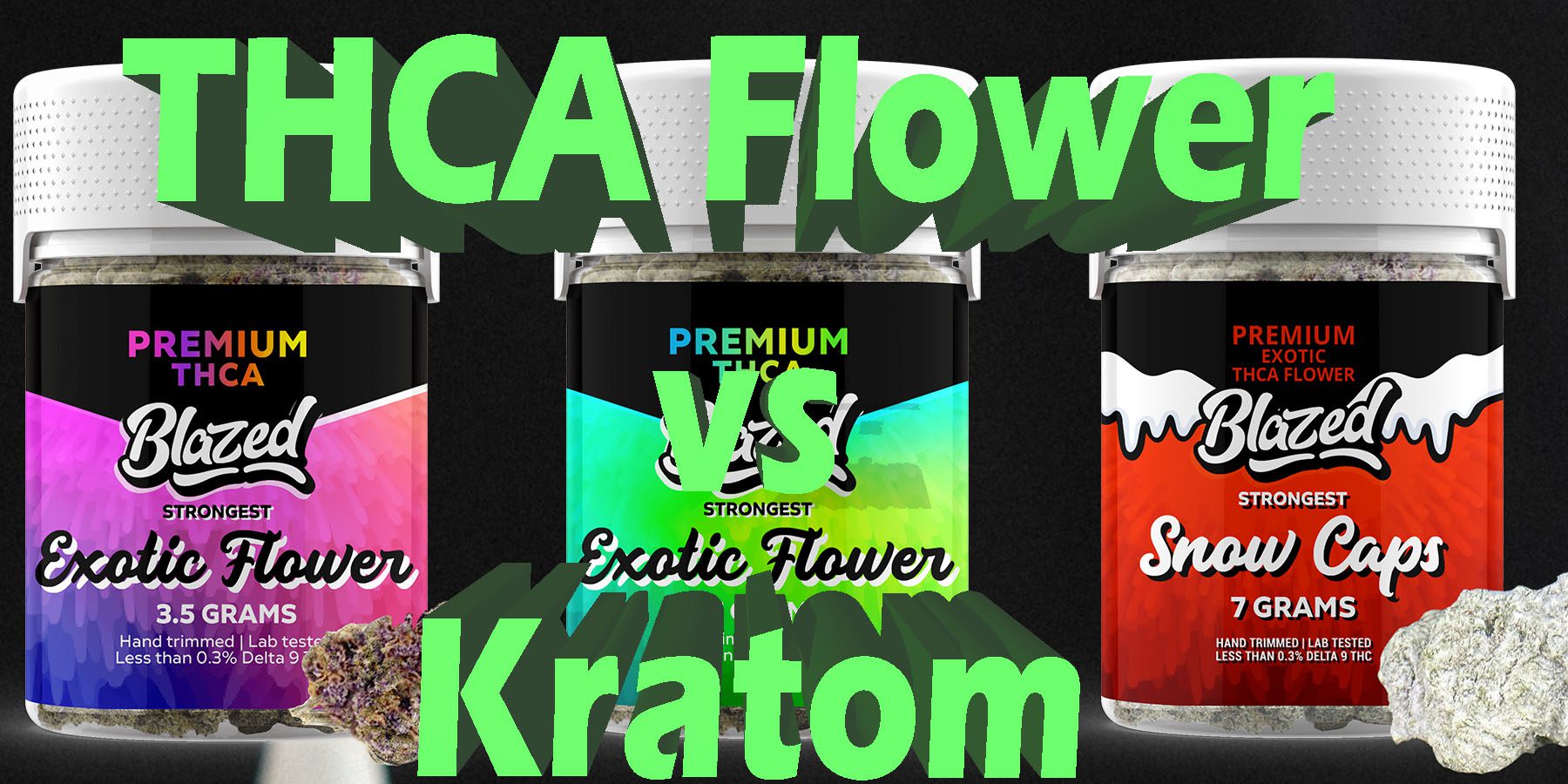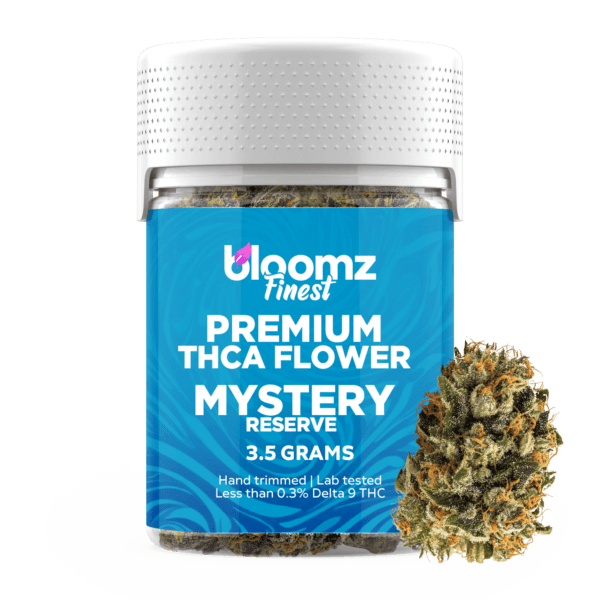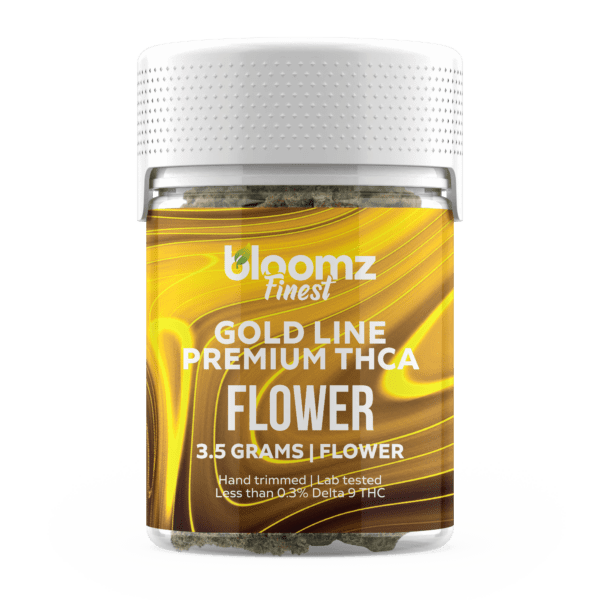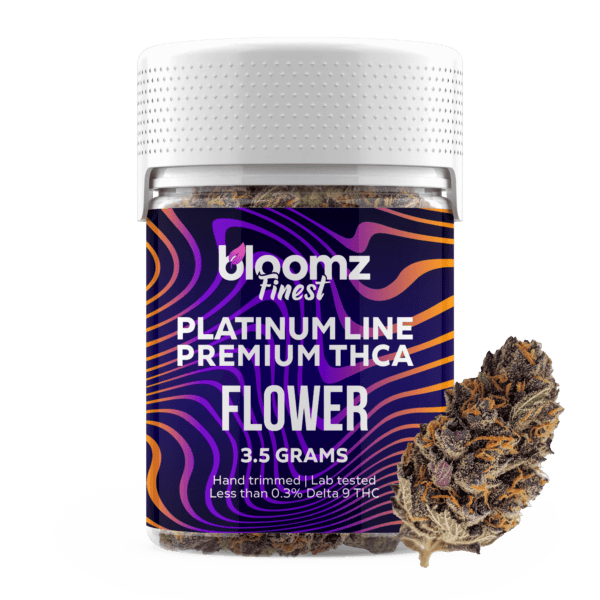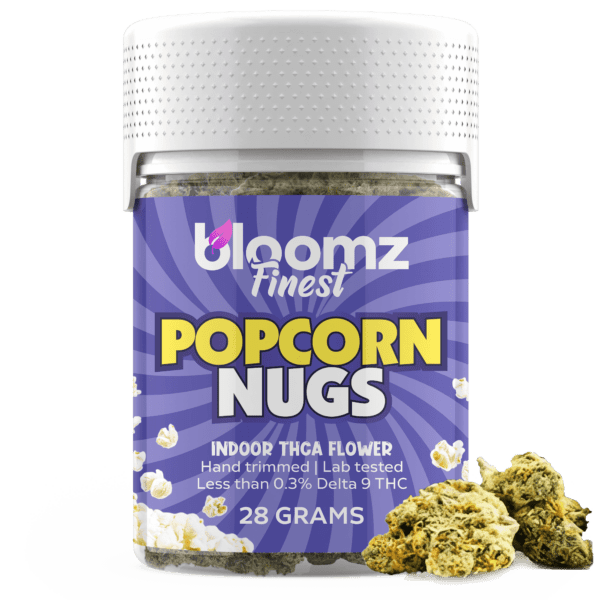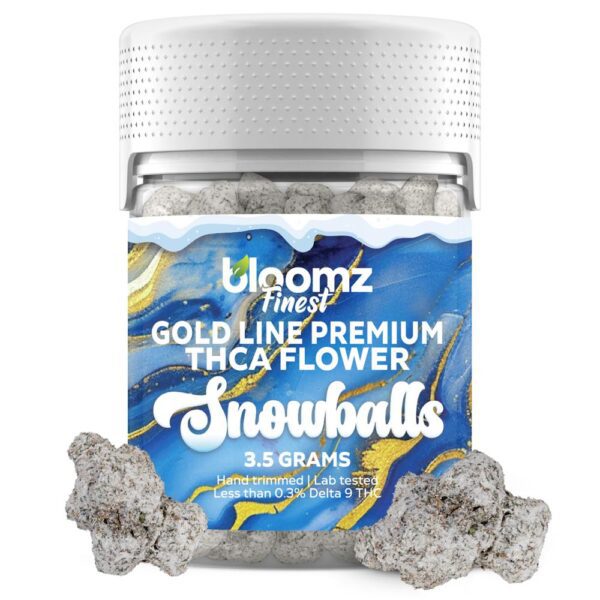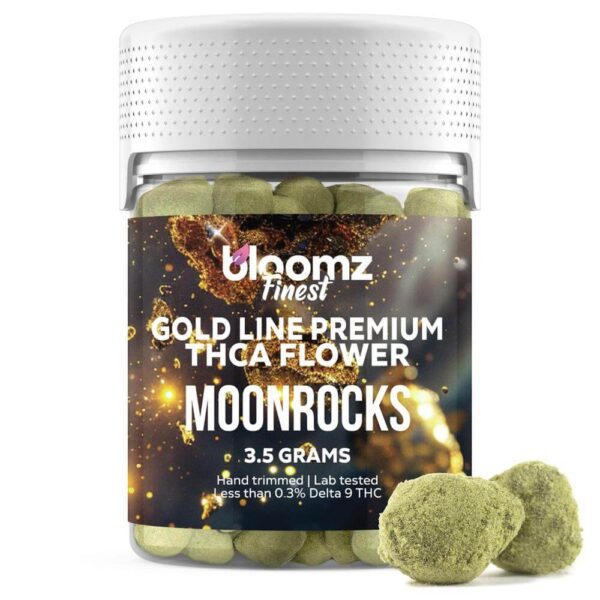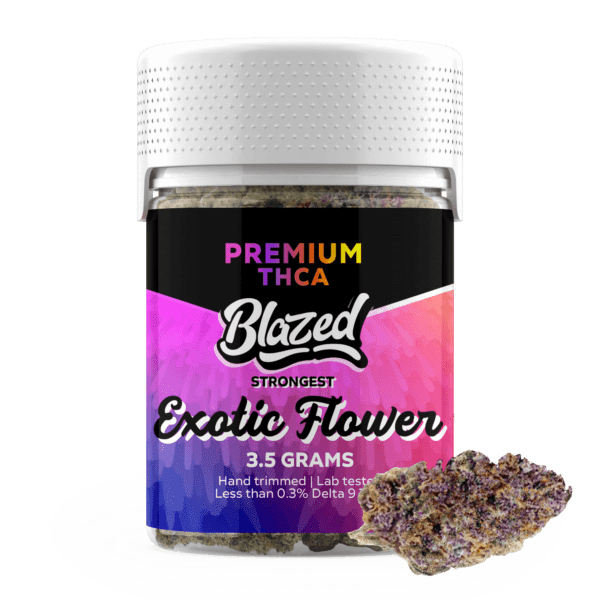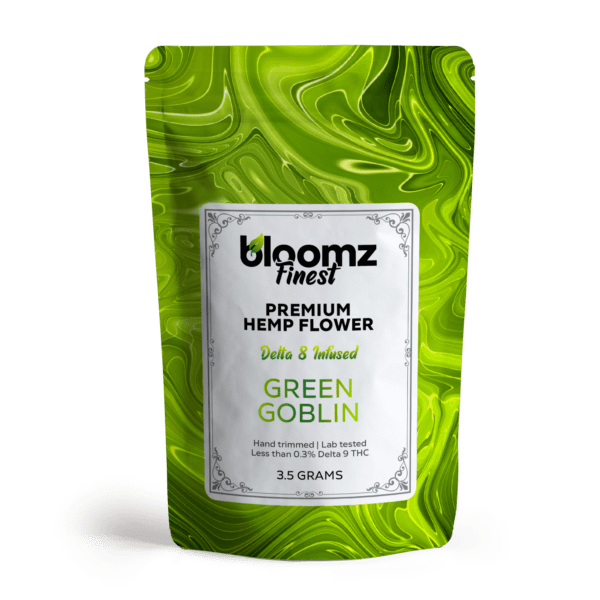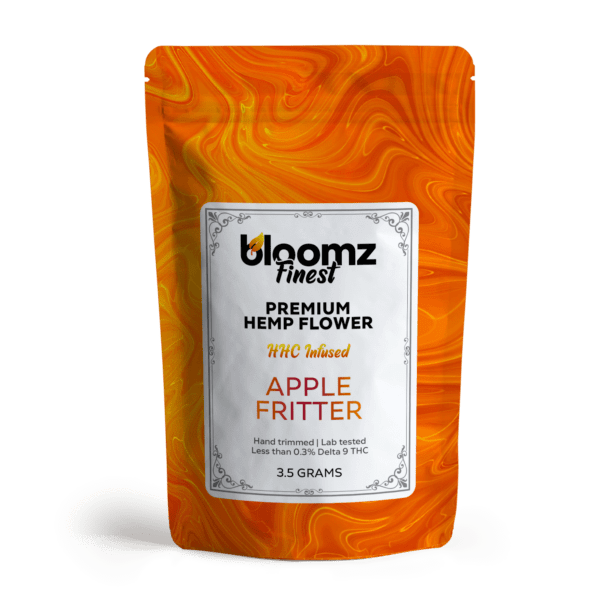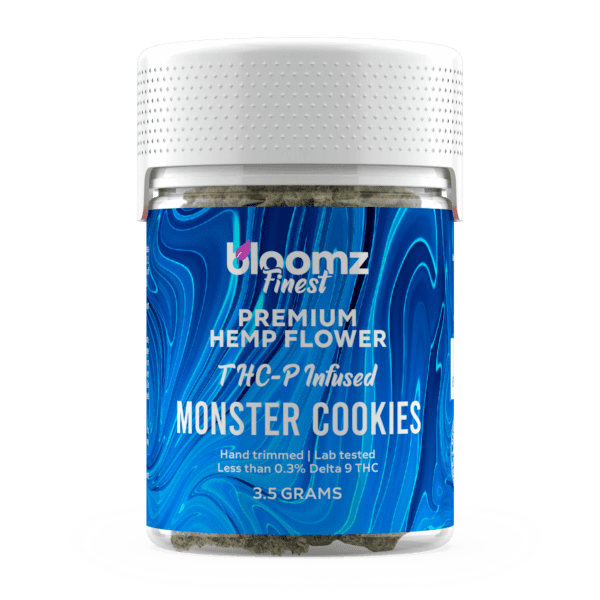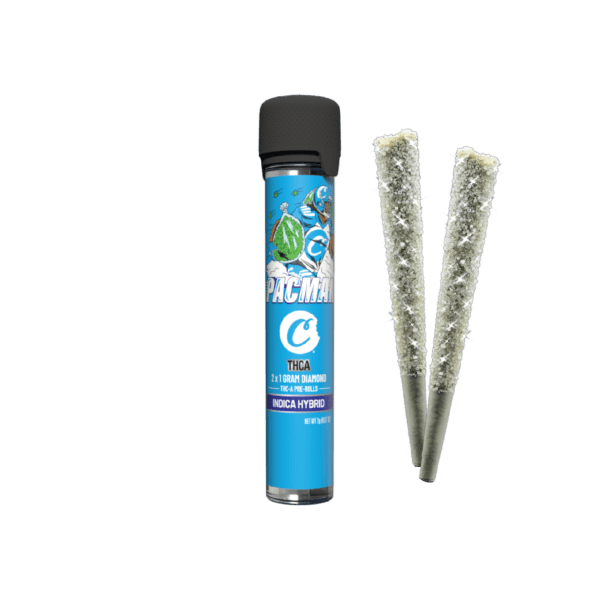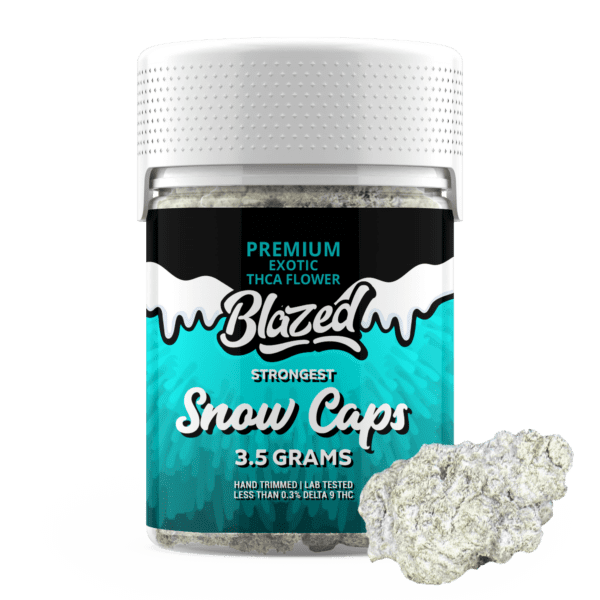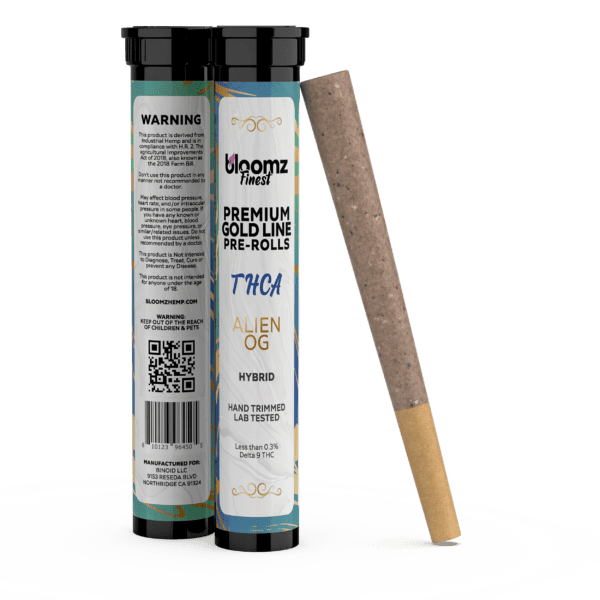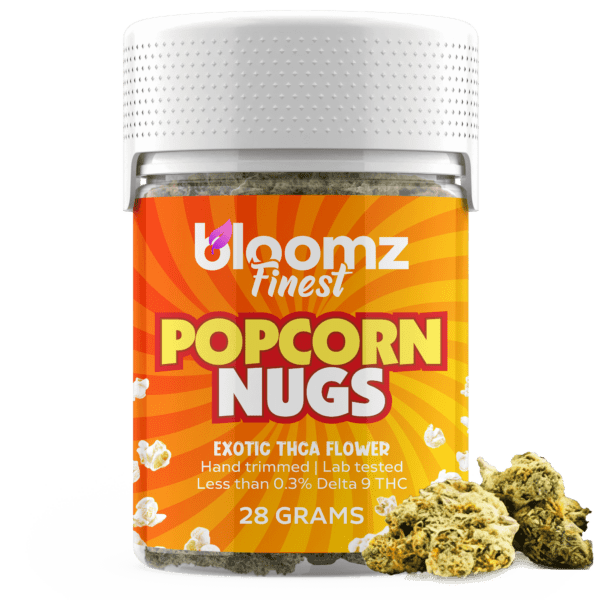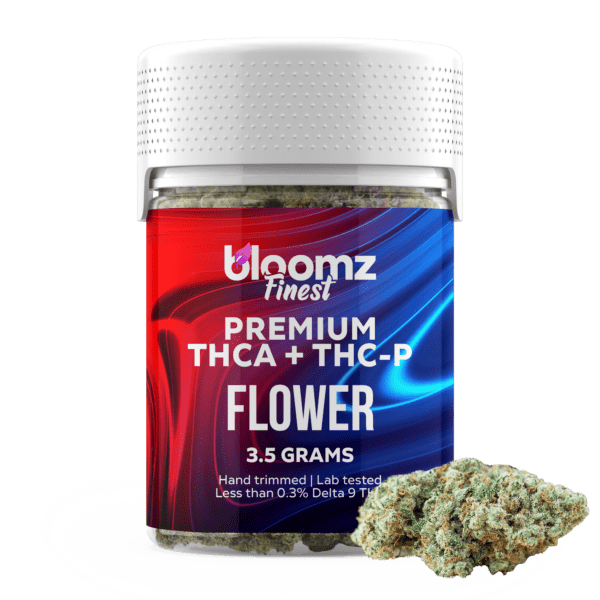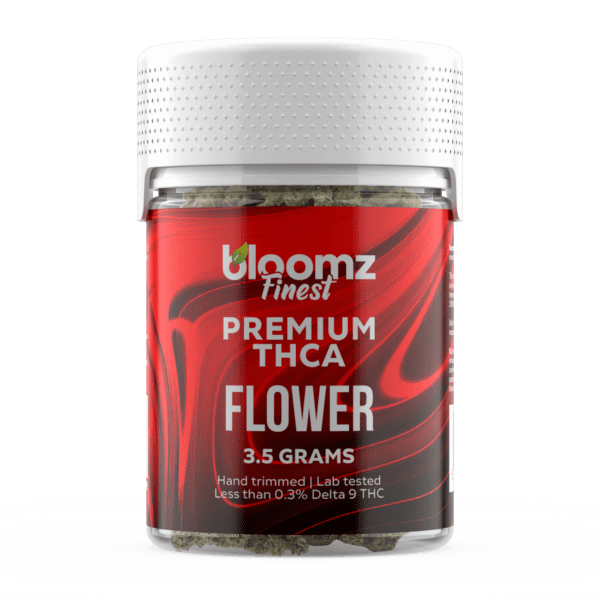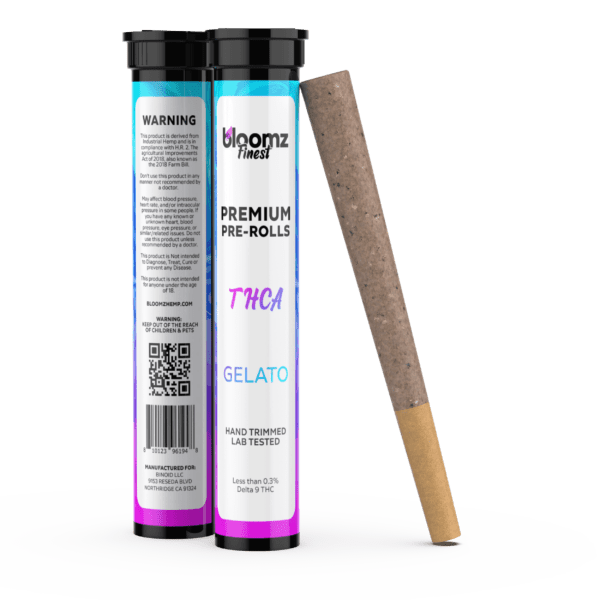In the ever-expanding universe of natural botanicals, a fascinating juxtaposition has emerged, capturing the attention of enthusiasts and curious newcomers alike. On one side stands THCA flower, a product of the revered cannabis plant, offering a familiar yet legally distinct pathway to time-honored experiences. On the other, we have Kratom, a tropical tree leaf from the distant shores of Southeast Asia, carrying with it centuries of cultural use and a profoundly different profile of effects. These two titans of the botanical world occupy unique spaces, each with its own lineage, chemical makeup, and community of followers.
To compare them isn’t simply to weigh one against the other, but to embark on a journey through diverse cultures, complex legal frameworks, and the intricate dance between plant chemistry and human perception. Their stories are woven from different threads, yet they find themselves together in the modern marketplace, inviting a closer look at what truly sets them apart.
To Buy THCA Flower Click Here
Recommended products
-
THCA Flower – Mystery Reserve
$41.99$79.99 -
THCA Flower – Indoor Exotics – Gold Line
$37.99$69.99 -
THCA Flower – Platinum Line
$49.99$79.99 -
THCA Smalls
$149.99$256.99
Why It’s Important to Breakdown the Matchup of THCA Flower vs. Kratom
Navigating the landscape of popular botanicals can often feel like trying to read a map with constantly shifting borders and landmarks. With the rise of both THCA flower and Kratom, consumers are presented with two powerful, yet fundamentally different, options. A detailed breakdown is not just helpful; it is essential for making informed decisions that align with personal preferences, local laws, and desired outcomes. Understanding the nuances—from their botanical origins and primary active compounds to their legal statuses and the spectrum of experiences they offer—empowers users to engage with these products responsibly and effectively. This comparison demystifies the conversation, moving beyond surface-level assumptions to explore the core characteristics that define each contender.
A thorough analysis serves several critical purposes for the modern consumer:
Clarifying Legal Complexities: The legal status of these two botanicals is one of the most significant and confusing points of differentiation. THCA flower exists because of a specific loophole in federal hemp legislation, but state laws can vary dramatically. Similarly, Kratom is federally legal but is banned in several states and municipalities, and it faces ongoing scrutiny from federal agencies. A clear understanding of these legal landscapes is the first and most crucial step for any potential user, ensuring they remain compliant with the laws in their specific location.
Understanding the Source and Science: THCA flower is a product of the Cannabis sativa L. plant, with its effects hinging on the conversion of a non-intoxicating cannabinoid into its famous intoxicating counterpart. Kratom, or Mitragyna speciosa, is a member of the coffee family, and its effects are derived from a complex suite of alkaloids, primarily mitragynine and 7-hydroxymitragynine. Delving into their distinct origins and chemical compositions is key to appreciating why their effects, even when they seem similar on the surface, are produced through entirely different biological pathways.
Defining the User Experience: While both substances can lead to states of relaxation or euphoria, the nature of these experiences is vastly different. The effects of THCA flower, once heated, are shaped by cannabinoids and terpenes, creating a vast spectrum of potential outcomes from hazy bliss to creative sparks. Kratom’s effects are famously dose-dependent, capable of producing stimulating sensations at low amounts and deeply sedating feelings at higher amounts. Breaking down these experiential profiles helps individuals align a product with the specific type of experience they are seeking.
Promoting Responsible Use: Knowledge is the bedrock of responsibility. By providing a comprehensive, side-by-side comparison of everything from product forms and consumption methods to potential pros and cons, users are better equipped to approach either substance with respect and caution. This includes understanding appropriate dosing, recognizing the importance of sourcing from reputable vendors, and being aware of the potential for developing a habit with frequent use, particularly with Kratom. An informed user is one who can maximize their positive experience while minimizing potential risks.
Contender #1: THCA Flower
Emerging from the rich and complex world of cannabis cultivation, THCA flower has swiftly risen as a major player, capturing the fascination of connoisseurs and the legally savvy alike. It represents a remarkable intersection of botanical science and legislative interpretation, offering an authentic cannabis experience that operates within the unique framework of federal hemp laws.
This contender is not a synthetic creation or a distant cousin of cannabis; it is the genuine article, cultivated with precision to highlight a specific, naturally occurring cannabinoid in its raw form. The journey of THCA flower is one of tradition meeting innovation, where the age-old appreciation for the plant’s aromatic and potent buds is preserved through modern agricultural and legal strategies, presenting a familiar yet distinct option for adults across the nation.
Tetrahydrocannabinolic acid, or THCA, is the foundational building block from which the most well-known cannabinoid, Delta 9 THC, is born. In its natural state within the raw cannabis plant, THCA is a non-intoxicating compound, meaning it doesn’t produce the euphoric or mind-altering effects typically associated with marijuana. It exists in abundance within the crystalline trichomes—the tiny, glittering glands that coat the surface of the buds and leaves—patiently waiting for a catalyst to transform it. This transformation process is known as decarboxylation, a scientific term for what happens when you apply heat. When THCA is exposed to heat through methods like smoking, vaping, or baking, it loses a carboxyl group (COOH) and converts into the celebrated Delta 9 THC, unlocking the powerful effects that have made cannabis famous for millennia. The brilliance of THCA lies in this dual nature: inert and non-intoxicating in its raw form, yet capable of becoming potently psychoactive with a simple spark.
Recommended products
So then, THCA flower is cannabis flower that has been selectively bred and cultivated to produce high concentrations of THCA while keeping its Delta 9 THC levels at or below the 0.3% threshold mandated by the 2018 Farm Bill for legal hemp. This legal distinction is the entire basis for its existence in the mainstream market. Farmers achieve this by carefully selecting genetics that naturally favor THCA production and by harvesting the plants at the precise moment when THCA content is at its peak, before it has had a chance to naturally degrade into Delta 9 THC over time. The production of high-quality, compliant THCA flower is a meticulous art and science that involves several key stages to ensure both potency and legality:
Genetic Selection: The process begins with choosing the right cannabis genetics. Cultivators select strains known for their robust production of THCA and their inherent ability to remain low in Delta 9 THC throughout the growing cycle. This often involves extensive research and development, cross-breeding different cultivars to stabilize the desired chemical profile.
Precision Cultivation: The plants are grown in highly controlled environments, particularly for indoor varieties. Growers manage every variable, including light cycles, temperature, humidity, and nutrient delivery, to maximize the development of trichomes, where the THCA is stored. This careful cultivation pushes the plant to its full potential without triggering a premature conversion of THCA to Delta 9 THC.
Strategic Harvesting: Timing the harvest is absolutely critical. Growers monitor the cannabinoid levels of the plants closely. They must harvest before the natural degradation process or excessive exposure to light and heat can convert a significant amount of the THCA into Delta 9 THC, which would render the crop non-compliant and legally classified as marijuana.
Careful Drying and Curing: After harvesting, the flower is carefully dried and cured. This slow process is essential for preserving the delicate terpenes that give the flower its unique aroma and flavor, as well as for maintaining the integrity of the cannabinoids. Improper curing can degrade the THCA and ruin the quality of the final product, so this step is performed in cool, dark, and climate-controlled rooms over several weeks.
Third-Party Lab Testing: The final and most crucial step is comprehensive testing by an accredited third-party laboratory. These labs analyze the flower’s cannabinoid profile to confirm that the Delta 9 THC concentration is below the 0.3% legal limit by dry weight. This Certificate of Analysis (COA) is the consumer’s guarantee that the product is a legal hemp product under federal law.
The market for THCA flower is incredibly diverse, offering a wide array of types and categories to suit every preference and budget. This variety is a testament to the sophistication of modern cannabis cultivation and processing, allowing consumers to choose products based on their desired quality, potency, and convenience. From sun-kissed outdoor buds to meticulously crafted concentrates, the world of THCA flower is rich with options.
Understanding these different categories helps consumers navigate the market and find the perfect product to match their needs, whether they prioritize aroma, strength, or ease of use. Each type offers a unique experience rooted in its specific method of cultivation and preparation:
Indoor THCA Flower: This is the premium standard in the world of cannabis cultivation. Grown entirely indoors, these plants are nurtured under perfect, highly controlled conditions. Growers have complete command over lighting (often using powerful LED or HPS lamps), temperature, humidity, airflow, and nutrient schedules. This meticulous management eliminates the stressors of the outdoors, such as pests and unpredictable weather, allowing the plant to focus all its energy on producing dense, resinous buds. The result is flower with maximum visual appeal, characterized by a thick coating of crystalline trichomes, vibrant colors, and a potent, complex aroma derived from a rich terpene profile. Indoor flower is celebrated for its consistency and top-tier quality, making it a favorite among discerning connoisseurs.
Outdoor THCA Flower: Cultivated under the natural sun and in the open air, outdoor THCA flower offers a different kind of quality. While it may not always have the pristine, manicured look of indoor buds, it benefits from the full spectrum of natural sunlight, which some argue leads to a more robust and complex cannabinoid and terpene profile—a concept known as “terroir.” Outdoor grows are more cost-effective and environmentally sustainable, resulting in a more affordable product for consumers. The buds are often larger, though they can be less dense, and their appearance and aroma are shaped by the unique conditions of their environment, offering a more rustic and traditional cannabis experience.
THCA Smalls: As the name suggests, “smalls” are smaller-sized buds from the cannabis plant. These are not lower in quality or potency; they simply didn’t grow as large as the main colas (the top-most, largest buds), often because they were located lower on the plant and received less direct light. Venders collect these small but mighty nugs during the trimming process and sell them at a lower price point than the larger, top-shelf flower. This makes THCA smalls an excellent value proposition for consumers who want the same high-quality experience of premium flower without the premium price tag, particularly for those who plan to grind it up for use in joints or vaporizers.
THCA Nugs: This term typically refers to the standard, full-sized buds, or “nugs,” that are harvested, trimmed, and sold as the primary product. These are the A-grade flowers that showcase the plant’s genetics in all their glory. They are well-formed, dense, properly cured, and represent the quintessential cannabis flower experience. When you purchase THCA flower, you are most often buying these premium nugs, which are graded on their size, structure, trichome coverage, and overall bag appeal.
THCA Snowballs/Snow Caps: This is a high-potency specialty product. It starts with a premium nug of THCA flower that is then coated or rolled in pure, powdered THCA isolate. This white, crystalline powder gives the bud a “snow-covered” appearance, hence the name “snowball” or “snow cap.” The addition of the isolate dramatically increases the overall THCA percentage of the product, often pushing it well above 40% or even 50%. This creates an incredibly potent product designed for experienced users seeking a powerful and profound effect.
THCA Moonrocks: Taking the concept of infused flower a step further, THCA moonrocks are the pinnacle of potency in the flower world. The creation process involves taking a high-quality THCA nug, dipping it or coating it in a sticky cannabis concentrate or oil (such as Delta 8 or CBD distillate), and then rolling the entire sticky creation in a generous layer of kief (the collected trichomes) or pure THCA isolate. The result is a dense, heavy, and extraordinarily potent product that is best consumed by breaking it apart and adding small pieces to a bowl or joint, as it can be too sticky to grind properly.
THCA Pre-Rolls, Blunts & Joints: For ultimate convenience, many brands offer pre-rolled products. THCA flower is expertly ground and packed into rolling papers (joints) or hemp wraps (blunts), making them ready to enjoy right out of the package. This eliminates the need for users to own a grinder, papers, or have the skill to roll their own. Pre-rolls are a fantastic option for social settings, for trying a new strain without committing to a larger quantity, or for anyone who values a quick, simple, and consistent consumption method.
Exotic THCA Flower: “Exotic” is a term used to describe cannabis strains that are rare, unique, or possess exceptionally desirable characteristics. These are often newer, hype-worthy genetics that feature unusual colorations (like deep purples and bright pinks), incredibly complex and novel flavor profiles (like candy, baked goods, or tropical fruits), and exceptionally high potency. Exotic strains are sought after by cannabis aficionados who are always on the hunt for the latest and greatest in cannabis breeding and want an experience that goes beyond the standard.
AA Exotic THCA Flower: Within the world of cannabis grading, “AA” or “dubs” typically represents a budget-friendly or mid-grade option. While it’s still a quality product that is perfectly enjoyable, it may be lacking in one or more of the top-tier attributes. The buds might be slightly less dense, the trim job not as meticulous, or the aroma and flavor less pronounced compared to higher grades. AA flower is a solid choice for casual consumers or those on a tighter budget who still want a reliable and effective product.
AAA Exotic THCA Flower: Often referred to as “trips,” AAA is the industry standard for high-quality cannabis. This grade of flower ticks most of the boxes for an excellent experience. The buds are well-structured and dense, have a good coating of trichomes, a pleasant and noticeable aroma, and deliver a smooth, flavorful experience. Most of the reputable flower on the market falls into the AAA category, representing a fantastic balance of quality and value that satisfies the vast majority of consumers.
AAAA Exotic THCA Flower: The highest echelon of cannabis quality is AAAA, also known as “quads” or “top-shelf.” This grade is reserved for the absolute best of the best. AAAA flower is virtually flawless in every aspect. It boasts breathtaking bag appeal with an impossibly thick layer of frosty trichomes, a pungent and complex aroma that fills the room, and a rich, delicious flavor that perfectly matches its scent. The bud structure is dense and perfectly cured, and the effects are potent and nuanced. AAAA is a luxury product for those who demand an unparalleled, premium cannabis experience from start to finish.
Just as important as the type or grade of the THCA flower is the specific strain, which dictates the nuanced effects, aromas, and flavors of the experience. The cannabis world is broadly categorized into three primary strain types: Indica, Sativa, and Hybrid. These classifications have long been used to help consumers predict the kind of journey a particular flower will take them on. While modern science suggests that the true effects are more closely tied to a strain’s unique profile of cannabinoids and terpenes, these categories remain an incredibly useful and widely understood shorthand for describing the general character of a flower, guiding users toward the experience that best suits their mood and occasion.
Each category represents a different branch of the cannabis family tree, with distinct physical characteristics and a legacy of producing certain types of effects:
Indica: Traditionally originating from the hash-producing regions of the world like Afghanistan, Pakistan, and India, Indica plants are known for their distinct physical traits. They are typically short, bushy, and dense, with wide, broad leaves of a deep green color. In terms of their effects, Indica strains have a strong reputation for producing profoundly relaxing and sedating experiences. They are often described as providing a “body high,” a feeling of deep physical ease and tranquility that can make you feel heavy, calm, and “chilled out.” These qualities make Indica THCA flower strains a popular choice for evening use, for unwinding after a long day, or for quiet activities like watching a movie or listening to music. Common terpenes found in Indica strains, such as myrcene, caryophyllene, and linalool, are thought to contribute to their classic soothing and calming aromatic profiles.
Sativa: Sativa strains hail from the equatorial regions of the world, including Southeast Asia, Africa, and Central America. In contrast to Indicas, Sativa plants grow tall and lanky, with thin, narrow leaves of a lighter green hue. Their effects are often considered the polar opposite of Indicas. Sativa strains are renowned for their energizing, uplifting, and cerebral effects, often described as a “head high.” Users frequently report feelings of euphoria, creativity, and focus, making Sativas a go-to choice for daytime activities, social gatherings, creative projects, or any situation where an energetic and positive mindset is desired. The terpene profiles of Sativa strains are often dominated by compounds like limonene, pinene, and terpinolene, which contribute to their characteristic bright, citrusy, and piney aromas.
Hybrid: As the name implies, Hybrid strains are created by cross-breeding Indica and Sativa plants. This practice has become the backbone of modern cannabis cultivation, allowing breeders to create new strains that combine the most desirable traits from both sides of the genetic spectrum. Hybrids can be Indica-dominant, Sativa-dominant, or a balanced 50/50 mix, resulting in an incredibly vast and nuanced range of potential effects. For example, an Indica-dominant hybrid might offer deep relaxation without being overly sedating, while a Sativa-dominant hybrid could provide an uplifting cerebral buzz tempered with a pleasant sense of bodily ease. Hybrids offer the best of both worlds, and their goal is to fine-tune the user experience, creating strains that are perfectly tailored for specific desires and occasions.
The legality of THCA flower in the United States is a fascinating and complex subject, rooted entirely in the language of the 2018 Agriculture Improvement Act, more commonly known as the 2018 Farm Bill. This landmark piece of federal legislation officially descheduled hemp from the Controlled Substances Act, creating a legal distinction between hemp and marijuana for the first time in modern history. The bill defined legal hemp as any part of the Cannabis sativa L. plant, including its derivatives, extracts, and cannabinoids, with a Delta 9 THC concentration of not more than 0.3% on a dry weight basis.
This specific wording is the key that unlocked the door for THCA flower. Because THCA is not Delta 9 THC, flower that is rich in THCA but contains less than 0.3% Delta 9 THC meets the federal definition of legal hemp. This allows it to be legally cultivated, sold, and possessed at the federal level. However, the situation becomes more complicated at the state level. While it is federally compliant, some states have enacted their own laws that take a different approach.
These states have adopted “total THC” testing requirements, which mandate that the potential amount of Delta 9 THC (calculated by adding the existing Delta 9 THC to the amount that could be created from the THCA) must be below 0.3%. This effectively bans THCA flower in those jurisdictions. As a result, the legality of THCA flower exists in a gray area, where it is permissible in many states but explicitly illegal in others, creating a patchwork of regulations across the country that consumers must carefully navigate.
The versatility of THCA flower is one of its most appealing attributes, offering users a variety of ways to enjoy its potential. The chosen method of consumption directly impacts the experience, from the onset and duration of the effects to the flavor and overall character of the session. Each method utilizes the principle of decarboxylation to convert the THCA into Delta 9 THC, but they do so in distinct ways. Whether you prefer the classic ritual of smoking, the flavor-forward experience of vaping, or the long-lasting journey of edibles, THCA flower can be adapted to suit your preferences.
This flexibility allows users to tailor their consumption to their lifestyle, desired level of discretion, and the specific kind of experience they are hoping to achieve:
Vaping (using a portable or desktop vaporizer): Vaping has become an immensely popular consumption method for its efficiency and flavor preservation. A dry herb vaporizer works by heating the THCA flower to a precise temperature, hot enough to activate and vaporize the cannabinoids and terpenes but below the point of combustion. This process, known as convection or conduction heating, effectively decarboxylates the THCA into Delta 9 THC without creating smoke. The resulting vapor is smoother and less harsh on the lungs than smoke and allows the user to taste the full, nuanced flavor profile of the strain’s terpenes. Vaping is also more discreet, as the vapor produced has a much lighter, less lingering aroma than smoke.
Smoking: This is the most traditional and straightforward method of consuming cannabis. It involves combusting the flower in a pipe, bong, joint, or blunt. The intense heat from the flame causes instantaneous decarboxylation, converting the THCA into Delta 9 THC, which is then inhaled through the smoke. Smoking provides immediate effects and is a deeply ingrained ritual for many longtime cannabis enthusiasts. While it is highly effective, the combustion process does destroy some of the delicate terpenes, which can alter the flavor, and the smoke itself contains tar and other byproducts that can be harsh on the respiratory system.
Cooking/Baking: For those who prefer not to inhale their botanicals, THCA flower can be used to create potent and long-lasting edibles. However, you cannot simply add raw flower to a recipe. The flower must first be decarboxylated. This is typically done by grinding the flower and baking it on a cookie sheet in an oven at a low temperature (around 220-240°F) for 30-40 minutes. This controlled heating converts the THCA into active Delta 9 THC. After decarboxylation, the activated flower is infused into a fat, such as butter or coconut oil, which can then be used in any recipe to make homemade edibles. When consumed, the effects are much stronger and last significantly longer than when inhaled, but they also take much longer to kick in, typically 45 minutes to 2 hours.
Once heated, THCA flower delivers effects that are indistinguishable from those of traditional marijuana, because chemically, the active compound becomes the exact same: Delta 9 THC. The experience it produces is multifaceted and can vary dramatically depending on several key factors, including the specific strain’s cannabinoid and terpene profile, the dosage consumed, the user’s individual tolerance and body chemistry, and the environment in which it is used. Generally, users can expect a significant shift in consciousness and perception. This often includes a powerful sense of euphoria, a feeling of lightheartedness and bliss that can lead to laughter and an elevated mood.
Many also report heightened sensory perception, where colors may seem more vibrant, sounds more profound, and food more delicious. Time perception can become distorted, with minutes feeling like hours, and short-term memory may be temporarily impaired. Depending on the strain, the effects can be deeply relaxing, leading to a “couch-lock” state of serene immobility, or they can be cerebrally stimulating, sparking creativity, introspection, and energetic sociability. The journey is uniquely personal, but it is consistently characterized by a potent departure from one’s ordinary state of mind.
Pros & Cons
Like any botanical product, THCA flower comes with its own unique set of advantages and potential drawbacks. Evaluating these pros and cons is a crucial step for anyone considering this contender, as it provides a balanced perspective that goes beyond the initial allure. These points highlight its strengths in areas like legality and authenticity while also acknowledging the challenges related to its legal complexity and practical considerations of use.
Pros:
Federally Legal Status: The single greatest advantage of THCA flower is its legal standing under the 2018 Farm Bill. By containing less than 0.3% Delta 9 THC by dry weight, it qualifies as legal hemp at the federal level. This allows it to be sold online and shipped directly to consumers in many states, providing access to a high-quality cannabis product in places where traditional marijuana dispensaries do not exist. This federal protection opens up a national market and provides a layer of legal confidence for both vendors and consumers operating in compliant states.
Authentic Cannabis Experience: Unlike other hemp-derived products that may involve converting CBD into different intoxicating cannabinoids, THCA flower offers an entirely authentic experience. It is the raw, natural cannabis plant, simply cultivated to meet a specific legal requirement. When heated, the THCA converts directly to Delta 9 THC, the primary compound in marijuana, delivering the genuine effects, flavors, and aromas that cannabis connoisseurs have cherished for generations. There are no conversions or synthetic processes involved, just the simple application of heat to a natural product.
Vast Strain and Product Variety: The THCA flower market is incredibly diverse, mirroring the traditional marijuana market in its breadth of options. Consumers can choose from a massive selection of Indica, Sativa, and Hybrid strains, each with its own unique profile of effects and flavors. Furthermore, the flower is available in numerous forms, from affordable outdoor-grown smalls to ultra-potent AAAA exotic nugs, snow caps, and moonrocks. This extensive variety ensures that every user, from the novice to the seasoned expert, can find a product that perfectly suits their preferences and desired experience.
Complete Control Over the Experience: Using raw flower gives the consumer ultimate control over their session. You can precisely measure the amount you wish to use, controlling the intensity of the effects. You also have complete freedom in choosing your consumption method—whether you prefer the ritual of rolling a joint, the pure flavor of a vaporizer, or the powerful effects of homemade edibles. This level of control allows for a highly personalized and tailored experience that pre-made products like edibles or vape carts cannot always offer.
Rich and Complex Terpene Profiles: One of the most celebrated aspects of high-quality cannabis flower is its terpenes, the aromatic compounds that give each strain its distinctive scent and flavor, from pine and citrus to berry and diesel. These terpenes do more than just provide a pleasant sensory experience; they are also believed to work synergistically with cannabinoids like THC to modulate and enhance the overall effects—a phenomenon known as the “entourage effect.” High-quality THCA flower preserves these delicate terpenes, offering a full-spectrum experience that is more nuanced and aromatic than many extracts or distillates.
Unmatched Potency and Efficacy: For those seeking a powerful and immediate effect, THCA flower is highly effective. Through smoking or vaping, the conversion to Delta 9 THC and its delivery to the bloodstream is nearly instantaneous, with effects felt within minutes. With strains regularly testing at over 20% or 30% THCA content, the resulting potency after decarboxylation is on par with the strongest medical and recreational marijuana available in dispensaries. This makes it a reliable choice for users seeking a profound sense of euphoria and relaxation.
Versatility Beyond Inhalation: While smoking and vaping are the most common uses, the utility of THCA flower extends into the kitchen. Because it is the raw precursor ingredient, it can be used to create a wide range of homemade products. By decarboxylating it and infusing it into butters or oils, users can make their own edibles, topicals, or tinctures. This DIY aspect is empowering, allowing individuals to create customized products with full knowledge of every ingredient involved, from the strain of the flower to the potency of the final infusion.
Growing Accessibility: Thanks to its federal legality, THCA flower is becoming more accessible than ever before. A growing number of reputable online retailers and specialty shops are now offering a wide selection of lab-tested products. This online accessibility means that adults in many states can browse and purchase high-quality cannabis flower from the comfort of their homes, a convenience that was unthinkable for most people just a few years ago. This has democratized access to the plant beyond the borders of states with recreational marijuana programs.
Potential for Non-Intoxicating Use: A unique and often overlooked benefit of THCA flower is the potential use of its primary compound, THCA, in its raw, unheated form. While research is still in its early stages, some studies suggest that raw THCA may have its own set of wellness benefits completely separate from the effects of THC. Some health-conscious consumers choose to incorporate raw cannabis leaves or buds into smoothies or juices to access the potential of raw cannabinoids without any intoxicating effects, adding another layer of versatility to the plant.
Full-Spectrum Synergy (The Entourage Effect): Unlike products made from isolated cannabinoids, raw flower contains a complete matrix of hundreds of different plant compounds, including a wide range of cannabinoids (like CBD, CBG, and CBC), terpenes, and flavonoids. The theory of the entourage effect posits that these compounds work together in synergy, with each one enhancing the effects and benefits of the others. This is why many users feel that the experience from full-spectrum flower is richer, more balanced, and more effective than that from a product containing only THC isolate.
Cons:
Complicated and Shifting Legal Landscape: While federally compliant, the legality of THCA flower is precarious and subject to change. Many states have already banned it by implementing “total THC” laws and more could follow suit as regulators catch up to this market trend. This creates a confusing and risky environment for consumers, who must constantly stay informed about the specific laws in their state, county, and even city. The legal gray area it occupies means its long-term availability is far from guaranteed and could disappear with new legislation or regulations.
Pungent Aroma and Lack of Discretion: One of the most practical downsides of THCA flower is its unmistakable and powerful aroma. The same terpenes that give the flower its wonderful flavor also produce a strong, lingering smell, both in storage and especially when smoked. This makes discreet use extremely challenging. For individuals living in apartments, with family members, or in any situation where the smell of cannabis would be problematic, using raw flower can be a significant liability and may attract unwanted attention.
Potential for Overwhelming Effects: The high potency of modern THCA flower can be a double-edged sword. For inexperienced users or those with a low tolerance, it can be easy to consume too much, leading to an uncomfortable and overwhelming experience. The intense psychoactive effects can sometimes lead to feelings of paranoia or unease, especially at high doses. This makes it crucial for new users to follow the “start low and go slow” mantra to avoid a negative reaction, which can be more difficult to manage with the rapid onset of smoking or vaping.
Requirement of Paraphernalia and Preparation: Unlike convenient, ready-to-use products like gummies or vape pens, using THCA flower requires some additional equipment and preparation. At a minimum, a user will need a grinder to break up the buds and a device for consumption, such as a pipe, bong, or vaporizer. If rolling joints, one also needs rolling papers and some degree of skill. This need for accessories makes it less portable and convenient for on-the-go use and presents a small barrier to entry for complete beginners.
Contender #2: Kratom
Our second contender, Kratom, emerges from the lush, tropical rainforests of Southeast Asia, a world away from the cannabis fields and processing laboratories. Known scientifically as Mitragyna speciosa, this botanical is not a recent discovery but a cornerstone of traditional culture with a history stretching back centuries. It is the leaf of a tall evergreen tree, a member of the same botanical family as coffee, that has been used by indigenous populations for its unique and versatile properties.
In the modern global marketplace, Kratom has carved out a significant niche, attracting a dedicated following of individuals who are drawn to its complex profile of effects. It presents a starkly different botanical experience from THCA flower, rooted in a different chemical makeup, a different cultural heritage, and a different relationship with the human body.
Kratom is a natural botanical substance derived from the leaves of the Mitragyna speciosa tree, which is native to countries like Thailand, Indonesia, Malaysia, Myanmar, and Papua New Guinea. The defining characteristic of Kratom lies in its rich and complex alkaloid profile. The leaves contain more than 40 different alkaloids, but two, in particular, are responsible for the majority of its effects: Mitragynine and 7-hydroxymitragynine. These compounds are unique in that they interact with some of the same receptors in the brain as opioids, yet they are structurally distinct and produce a different spectrum of effects.
Mitragynine is the most abundant alkaloid, making up a significant portion of the leaf’s active content, while 7-hydroxymitragynine is present in much smaller quantities but is significantly more potent. The interplay between these and other minor alkaloids is what gives Kratom its signature dose-dependent effects, a duality that sets it apart from many other botanicals. This unique mechanism of action is central to understanding both its appeal and the controversies surrounding it.
The history of Kratom is deeply woven into the cultural fabric of Southeast Asia, where its use is not a modern trend but a practice passed down through generations. For centuries, rural laborers, farmers, and fishermen in these regions have chewed the fresh leaves of the Mitragyna speciosa tree to combat fatigue, increase endurance, and improve productivity during long, arduous workdays under the hot sun. The stimulating properties of the fresh leaves were a natural part of daily life. Beyond its use for physical stamina, Kratom also played an important social and ceremonial role.
It was traditionally prepared as a tea and served to guests as a sign of hospitality, used in local village gatherings, and incorporated into traditional folk medicine rituals. The knowledge of the tree, its different vein types, and preparation methods was communal wisdom. Its journey to the Western world began much more recently, primarily in the early 21st century, as travelers and the internet facilitated the global exchange of information about unique botanicals. This introduction sparked widespread interest, transforming Kratom from a regional traditional herb into a global commodity.
One of the most fascinating aspects of Kratom is the classification of its leaves based on the color of the central vein that runs down the middle. These vein colors—Red, White, and Green—are generally believed to correspond to the leaf’s maturity at the time of harvest and are associated with a distinct spectrum of effects. This color system is the primary way consumers navigate the Kratom market to find a product that aligns with their desired experience. While the exact science is still being explored, this traditional classification has proven to be a reliable guide for millions of users, with each color offering a unique character and purpose:
Red Vein: Red Vein Kratom is harvested from the most mature leaves on the Mitragyna speciosa tree, where the veins have taken on a reddish hue. This type is by far the most popular and widely available on the market. It is universally associated with calming, soothing, and relaxing effects. Users often turn to Red Vein strains to unwind in the evening, promote a sense of tranquility, and achieve a state of serene contentment. Due to its deeply relaxing nature, it is generally considered unsuitable for activities that require high energy or sharp focus. Popular Red Vein strains include Red Bali, Red Borneo, and Red Maeng Da.
White Vein: Harvested from the youngest leaves on the tree, White Vein Kratom is considered to be the opposite of Red Vein. It is best known for its stimulating, energizing, and mood-lifting properties. Many users compare the effects of White Vein to a strong cup of coffee, but without the jitteriness or subsequent crash that can sometimes accompany caffeine. It’s a popular choice for morning use to kick-start the day, for powering through a midday slump, or for any situation that calls for increased focus, motivation, and a positive outlook. Popular strains include White Maeng Da and White Borneo.
Green Vein: Positioned perfectly between the calming Reds and the stimulating Whites, Green Vein Kratom is harvested from leaves at the midpoint of their life cycle. As such, it is renowned for its balanced and moderate effects. Green Vein strains are often described as providing a gentle boost of energy and focus while simultaneously promoting a sense of positive well-being and subtle relaxation. This versatility makes it a favorite among both new and experienced users, as it is suitable for a wide range of situations, from social gatherings to tackling daily tasks, without being overly sedating or overly stimulating. Green Malay and Green Maeng Da are classic examples of this balanced variety.
Yellow/Gold Vein: Yellow or Gold Vein Kratom is somewhat of an enigma, as it is not a natural vein color. Instead, it is the result of a specialized drying and curing process. Often, it begins as a Red or Green Vein leaf (or a blend of multiple colors) that undergoes a unique, often proprietary, fermentation or extended sun-drying technique. This process is believed to alter the alkaloid profile of the leaves, resulting in effects that are distinct from the primary three colors. Users often describe Yellow/Gold strains as being particularly euphoric and long-lasting, offering a unique blend of relaxation and mood enhancement.
Beyond the fundamental vein colors, the world of Kratom is further diversified by a vast number of named strains. These names often refer to the geographical region where the Kratom was grown or to a specific processing method that gives the product its unique characteristics. Much like the concept of “terroir” in wine or coffee, the specific soil composition, climate, and harvesting techniques of a region are believed to impart a unique alkaloid signature to the Kratom leaves. This results in a rich tapestry of options, allowing users to explore subtle variations in effects to find the perfect strain that resonates with their individual needs and preferences:
Maeng Da: This is not a geographical location but a Thai term that roughly translates to “pimp grade,” signifying a product of high quality and potency. Maeng Da is typically created through grafting, a technique where tissues of different plants are joined to breed a new, more potent variant. It is available in Red, White, and Green varieties, and across the board, Maeng Da strains are known for being stronger and more pronounced in their effects than their standard counterparts, making them a favorite among experienced Kratom users.
Bali: Often one of the first strains new users encounter, Bali Kratom is well-known for its deeply relaxing properties, particularly Red Bali. Despite its name, most Bali Kratom is believed to be cultivated in Borneo and other parts of Indonesia, with Bali historically being a major shipping port from which it was exported. It is considered a classic and reliable choice for those seeking profound calmness and a sense of well-being.
Borneo: As the name suggests, this Kratom originates from the massive island of Borneo, which is one of the largest Kratom-producing regions in the world. Borneo strains are available in all colors and are known for their consistent and well-rounded effects. Red Borneo is highly sought after for relaxation, while White and Green Borneo are praised for their clean, balanced energy and mood enhancement.
Indo: Short for Indonesia, Indo Kratom refers to strains sourced from the various islands of this archipelago. Indo strains are generally considered to be potent but less overwhelming than some other varieties like Maeng Da or Thai. They are often described as providing very smooth and long-lasting effects, making them a good choice for users who want a sustained experience without intense peaks and valleys.
Malay: Hailing from Malaysia, Malay Kratom is particularly famous for its longevity. Users frequently report that the effects of Malay strains, especially the popular Green Malay, last significantly longer than other varieties. Green Malay is celebrated for its perfect balance of gentle energy, positive mood, and subtle relaxation, making it one of the most versatile and highly-regarded strains on the market.
Thai: Traditionally grown in Thailand (though most Thai strains are now cultivated in Indonesia due to past legality issues in Thailand), this Kratom is historically associated with highly stimulating effects. White and Green Thai are renowned for providing a powerful burst of energy and focus, making them ideal for demanding physical or mental tasks. Red Thai, conversely, offers a unique experience, blending the relaxing properties of a red vein with a notable euphoric quality.
Bentuangie: This is a specific type of fermented Kratom. It is typically a Red Vein strain that undergoes a special fermentation process where the fresh leaves are packed into bags, allowing them to cure and ferment before being dried. This process is believed to enhance the concentration of certain alkaloids, particularly 7-hydroxymitragynine, resulting in a strain that is exceptionally calming and soothing.
Sumatra: Originating from the Indonesian island of Sumatra, these strains are known for producing effects that are both potent and enduring. The island’s unique climate and soil contribute to a distinct alkaloid profile. Sumatra strains are available in all vein colors, with Red Sumatra being prized for its deeply relaxing properties and White Sumatra being sought after for its smooth, sustained energy.
Recommended products
In the modern market, Kratom is available in a diverse range of product forms, catering to a wide spectrum of consumer preferences for convenience, taste, and method of delivery. While traditional use involved chewing fresh leaves or brewing a simple tea, today’s processing techniques have expanded the possibilities significantly. This evolution has made Kratom more accessible and palatable to a Western audience that may be unaccustomed to the raw, earthy taste of the plant material. From fine powders and pre-measured capsules to flavored drinks and potent extracts, there is a Kratom product to fit nearly every lifestyle and need:
Powders: This is the most common and traditional form of Kratom sold today. The dried leaves are ground into a very fine, talc-like powder. This form offers the most versatility and is typically the most cost-effective. Users can mix the powder into beverages like orange juice or smoothies, brew it into a tea, or use the “toss and wash” method, which involves placing a dose of powder in the mouth and washing it down with liquid. Powder allows for precise, customizable dosing.
Capsules: For those who cannot stand the bitter, earthy taste of Kratom powder, capsules are an ideal solution. They contain pre-measured amounts of powder enclosed in a digestible gelatin or vegetarian capsule. This method is incredibly convenient, discreet, and completely masks the flavor. The only downsides are that capsules can be more expensive than raw powder and the effects may take slightly longer to kick in as the capsule needs to dissolve in the stomach first.
Gummies: A relatively new and increasingly popular innovation, Kratom gummies offer a tasty and approachable way to consume Kratom. These products are infused with a precisely dosed amount of Kratom extract, and the flavor of the gummy effectively conceals the plant’s natural bitterness. They are easy to dose, portable, and provide a familiar consumption experience for those accustomed to other types of gummy supplements, making them an excellent entry point for curious new users.
Drinks/Beverages/Shots: Ready-to-drink Kratom products are designed for maximum convenience and rapid effects. These often come in the form of small, concentrated “shots” or larger, seltzer-style beverages. They are typically made with a potent Kratom extract, allowing a significant dose to be delivered in a small volume of liquid. Often flavored with fruit juices or other ingredients, they are a fast and easy way to consume Kratom on the go.
Disposable Vape Pens: The inhalation of Kratom via vape pens is a very recent and highly controversial development. These products claim to vaporize Kratom alkaloids for inhalation. However, this is the least common form of consumption, and its safety and efficacy are not well-studied or understood. The high temperatures involved in vaping could potentially destroy the delicate alkaloids, and the long-term effects of inhaling Kratom are completely unknown, making it a method that most experienced users and safety advocates advise against.
Tinctures & Extracts: Kratom extracts are highly concentrated products created by isolating the active alkaloids from the raw leaf material. This results in a product that is many times stronger than an equivalent weight of plain leaf powder. Extracts are available as liquids (tinctures), powders, or resinous solids. They are intended for experienced users only, as their potency requires very careful and precise dosing to avoid overwhelming effects. Tinctures are often sold in dropper bottles, allowing for micro-dosing.
The legal status of Kratom in the United States is a complex and often contentious issue. At the federal level, Kratom is currently legal to buy, sell, and possess. However, it is not regulated by the Food and Drug Administration (FDA), which has issued numerous warnings about the substance and has not approved it for any use. The Drug Enforcement Administration (DEA) considered placing Kratom’s active alkaloids on the Schedule I list of controlled substances in 2016 but withdrew its intent following significant public and political backlash. Despite its federal legality, the regulatory landscape is a fractured patchwork at the state and local levels.
Several states—including Alabama, Arkansas, Indiana, Rhode Island, Vermont, and Wisconsin—have passed laws making Kratom illegal. Furthermore, some counties and cities in otherwise legal states have enacted their own local bans. In response to the threat of prohibition, the American Kratom Association has championed the Kratom Consumer Protection Act (KCPA), which is state-level legislation designed to regulate the industry by imposing rules on testing, labeling, and age restrictions (typically 18 or 21). Several states have already passed the KCPA, creating a regulated and safer market for consumers in those areas.
Kratom’s effects are famously defined by the dose taken, creating a unique biphasic experience that sets it apart from many other botanicals. This dose-dependent duality is the cornerstone of its versatility. At lower doses, typically just a few grams of powder, Kratom tends to produce stimulating effects. Users often report feeling more energetic, alert, sociable, and focused, similar to the experience of a strong cup of coffee or a caffeinated beverage. This makes lower doses popular for daytime use, for tackling work or chores, or for enhancing social interactions.
As the dosage increases, the character of the experience undergoes a profound shift. At these higher doses, the stimulating properties recede and are replaced by predominantly sedating and euphoric effects. Users report feelings of deep physical relaxation, a serene sense of calm, and a warm, blissful state of contentment. The experience can become intensely tranquil, making higher doses exclusively suitable for evening relaxation or quiet, inactive periods. This wide spectrum, from a morning motivator to an evening unwinder, is all contained within the same leaf, with the user’s chosen dosage acting as the key to unlock the desired effect.
Pros & Cons
Kratom’s journey from a traditional Southeast Asian herb to a widely used botanical in the West has been accompanied by a great deal of debate. To form a complete picture, it’s essential to examine both the positive aspects that have drawn millions of people to it and the significant concerns that have been raised by regulators and health officials. Its profile of pros and cons is distinctly different from that of THCA flower, reflecting its unique chemistry, legal status, and cultural context.
Pros:
Accessibility in Legal Areas: In the many states and municipalities where it has not been banned, Kratom is widely and legally available. It can be purchased from a variety of vendors, including specialized online retailers, local smoke shops, and even some convenience stores. This accessibility makes it a readily available option for adults who live in jurisdictions where it is permitted, without the need for any special license or prescription. This stands in contrast to the more limited availability of cannabis products in many parts of the country.
Wide Spectrum of Reported Effects: Kratom’s signature dose-dependent nature is perhaps its greatest asset. The ability of a single substance to be stimulating and focus-enhancing at one dosage level and deeply relaxing and soothing at another makes it incredibly versatile. This allows users to tailor their experience to their specific needs throughout the day, using it as a coffee alternative in the morning and as a way to unwind in the evening. This broad spectrum of potential effects is a key reason for its enduring popularity.
Variety of Strains and Consumption Methods: The Kratom market offers an impressive amount of choice. Users can select from dozens of strains, from Maeng Da to Bali, and a spectrum of vein colors, each offering a subtle variation on the core effects. Furthermore, the proliferation of product types—from traditional powders and capsules to modern gummies and beverages—means there is a consumption method to suit almost any preference for taste, convenience, and discretion. This variety allows for a highly personalized user experience.
Natural, Plant-Based Botanical: Kratom is a natural product, derived directly from the leaves of the Mitragyna speciosa tree without the need for complex chemical alterations. For many individuals who prefer to use plant-based botanicals, this is a significant advantage. The fact that it has been used in its natural form for hundreds of years in its native regions provides a sense of historical precedent and authenticity that many users find appealing.
Rich History of Traditional Use: Unlike many novel products on the market, Kratom has a long and well-documented history of use in Southeast Asian cultures. For centuries, it has been an integral part of daily life for laborers and a component of social rituals, used for stamina, mood, and community bonding. This long history provides a valuable cultural context and suggests a long-standing relationship between this plant and human societies, which many users find reassuring.
Discreet and Convenient Usage Options: While using raw Kratom powder can be messy and has a strong taste, the availability of capsules, gummies, and liquid shots makes consumption remarkably discreet and convenient. These forms produce no smell, require no extra paraphernalia, and can be consumed quickly and easily in almost any setting without drawing attention. This makes it a more practical option than HHC flower for individuals who require subtlety in their botanical use.
Affordability of Raw Leaf Powder: Compared to many other botanical products on the market, Kratom in its raw powder form is often very affordable. Because it is a relatively simple agricultural product that can be harvested and processed in large quantities, the price per gram can be quite low, especially when purchased in bulk. This cost-effectiveness makes it an accessible option for people from a wide range of economic backgrounds.
Cons:
Lack of Federal Regulation and Quality Control: Because the FDA does not regulate Kratom, there is a significant lack of oversight in the industry. This “wild west” environment means that the quality, purity, and potency of products can vary wildly between vendors. Without mandatory third-party testing, some products may be contaminated with harmful substances like heavy metals or salmonella, or their alkaloid content may be inconsistent. This places a heavy burden on the consumer to find and vet reputable vendors who voluntarily adhere to high quality control standards.
Uncertain and Patchwork Legality: The legal status of Kratom is inconsistent and precarious. While it remains legal at the federal level, the handful of state-wide bans and numerous city and county prohibitions create a confusing legal minefield for consumers. The constant threat of new legislation and the ongoing negative attention from federal agencies like the FDA mean that its legal status could change abruptly, making its future availability uncertain. Users must remain vigilant about the laws in their specific location.
Potential for Dependence and Withdrawal: One of the most significant concerns associated with Kratom is its potential for habit formation with frequent, long-term use. Because its primary alkaloids interact with the body’s opioid receptors, daily use can lead to physical dependence. If a dependent user suddenly stops taking Kratom, they can experience a range of uncomfortable withdrawal symptoms. This risk necessitates responsible use, including taking regular breaks and avoiding daily consumption.
Unpleasant Taste and Social Stigma: For many people, the taste of raw Kratom powder is extremely bitter and unpleasant, making it difficult to consume without mixing it into strongly flavored beverages. Beyond the taste, Kratom is often misunderstood by the general public and has been the subject of negative media attention. This can create a social stigma around its use, leading to judgment or misunderstanding from friends, family, or employers who are not familiar with the substance beyond sensationalized headlines.
Risk of Overwhelming Effects from Extracts: The availability of highly concentrated Kratom extracts poses a significant risk, especially for new or inexperienced users. These products are many times more potent than the plain leaf, and it is very easy to accidentally take too much. An excessive dose of Kratom, particularly an extract, can lead to extremely unpleasant effects often referred to as the “wobbles,” which can include dizziness, nausea, and vomiting. This underscores the importance of careful dosing and treating extracts with extreme caution.
How to Go About Choosing Which Option
Selecting between THCA flower and Kratom is a deeply personal decision that hinges on a variety of factors, from your local legal environment to the specific type of experience you’re seeking. There is no single “better” option; the right choice is the one that best aligns with your individual circumstances and preferences. Both botanicals offer unique pathways to relaxation and euphoria, but they travel those paths via entirely different mechanisms and come with distinctly different considerations. By carefully weighing these key factors, you can move past the hype and make a clear-headed, informed choice that suits your lifestyle.
The first and most non-negotiable step is to thoroughly research the legality of each substance in your specific state and city. As discussed, the laws surrounding both THCA flower and Kratom are a complex patchwork. For THCA flower, you must determine if your state has a “total THC” law that would prohibit it. For Kratom, you must confirm that it is not banned in your state, county, or municipality. Your personal preference is irrelevant if a product is illegal where you live. Beyond legality, consider the desired experience. Are you looking for the authentic, terpene-rich, psychoactive journey of classic cannabis? Or are you interested in the versatile, dose-dependent effects of Kratom, which can range from stimulating to deeply sedating? Your answer to this question will be the primary guide for your decision.
Next, think about your lifestyle and consumption preferences. Do you enjoy the ritual of preparing and smoking or vaping flower, or do you prioritize convenience and discretion? THCA flower often involves paraphernalia and produces a strong, recognizable odor, making it less than ideal for certain living situations. Kratom, especially in capsule or gummy form, is odorless, tasteless, and can be consumed in seconds with no preparation.
Finally, consider your comfort level and willingness to do your own research. The THCA market is generally more transparent, with lab reports being a standard practice. The Kratom market is less regulated, placing the responsibility squarely on you to find a reputable vendor that provides proof of testing for contaminants and purity.
|
Feature |
THCA Flower |
Kratom |
|---|---|---|
|
Primary Active Compound |
Tetrahydrocannabinolic Acid (THCA) |
Mitragynine & 7-Hydroxymitragynine |
|
Mechanism of Action |
Converts to Delta 9 THC upon heating; acts on cannabinoid receptors (CB1). |
Alkaloids act on various receptors, including opioid receptors. |
|
Legal Status |
Federally legal under the 2018 Farm Bill; illegal in states with “Total THC” laws. |
Federally legal but unregulated; illegal in several states and municipalities. |
|
Core Experience |
Psychoactive, euphoric, relaxing, or stimulating depending on strain (Indica/Sativa). |
Dose-dependent: stimulating at low doses, sedating and euphoric at high doses. |
|
Consumption Methods |
Smoking, vaping, cooking into edibles. |
Powders (in drinks), capsules, gummies, teas, liquid shots. |
|
Aroma/Discretion |
Very pungent and recognizable aroma; low discretion. |
Capsules/gummies are odorless; powder has an earthy scent but is not as pervasive as smoke. High discretion. |
|
Onset of Effects |
Nearly instant when smoked/vaped; 45-120 mins for edibles. |
15-30 minutes on an empty stomach; can take longer with food. |
|
Regulation |
Loosely regulated under hemp laws; third-party lab tests (COAs) are common. |
Unregulated by the FDA; quality control depends entirely on the vendor. |
Charting Your Own Botanical Course
Ultimately, the choice between these two powerful botanicals is a personal expedition into your own preferences and priorities. The path illuminated by THCA flower leads to a world of aromatic terpenes and the classic, profound shift in consciousness that only cannabis can provide. The road offered by Kratom is one of remarkable versatility, a journey where the experience is sculpted by your chosen dose, offering either a gentle lift or a deep, tranquil calm. Neither path is inherently superior.
The true wisdom lies not in declaring a winner, but in understanding the unique terrain of each option and choosing the journey that best harmonizes with the rhythm of your own life. Engage with curiosity, proceed with respect, and let your informed choice guide you toward your desired state of well-being.

